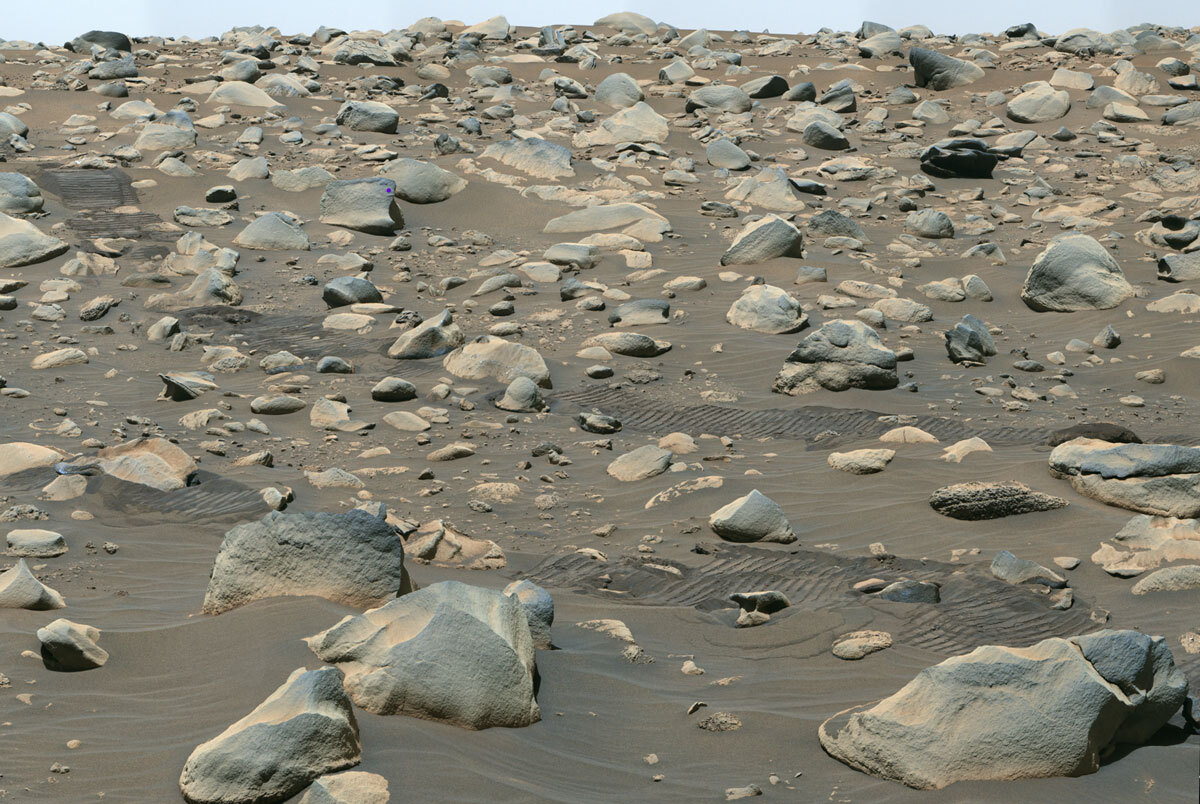Let the river do its work: NASA's Perseverance Mars rover gets help in search for rock samples

NASA's Perseverance, a six-wheeled robotic rover on a mission to hunt and collect samples of Martian rocks that could be brought to Earth for deeper investigation, is getting some help from a fast-moving ancient river to do its task.
On June 23, the Perseverance Mars rover sealed a tube containing its 20th rock core sample. The rock core was drilled by the rover from an outcrop composed of tiny chunks of other rocks that were carried from elsewhere by a river in the distant past and deposited here and over time, these fragments became cemented together.
The conglomerate rock called "Emerald Lake" packs a lot of information about places the rover may never physically visit, making it a goldmine of geological information.
As with the rock fragments in the 20th sample, called Otis Peak, the boulders are believed to have likely originated elsewhere and were transported to their current location by an ancient river billions of years ago. Additionally, boulders offer a significant advantage due to their large surface area, allowing scientists to visually investigate multiple potentially distinct rocks in a single image.
"Whether the boulders appear intriguing enough for closer examination and possible sampling remains to be seen – literally. We're taking a page from the past. Prospectors looking for gold or diamonds in the old days often looked in rivers to determine whether there was any deposit of interest upstream. No need to hike up there to see – let the river do the work," says Ken Farley, Perseverance project scientist from Caltech in Pasadena.
Rock nerds rejoice! From big boulders to tiny pebbles, the ancient riverbed I’m exploring right now has it all. Washed in from upstream, these fragments can help my team uncover the river’s past and its potential for supporting ancient life. Read more: https://t.co/s0hgK7rOKp pic.twitter.com/FDnzZz4eF3
— NASA's Perseverance Mars Rover (@NASAPersevere) July 19, 2023
The Perseverance rover is currently on its way to a low ridge called "Snowdrift Peak" and to get there, it will have to cross a field of boulders.
The sample collected by the rover on Mars will be brought to Earth as part of the NASA-ESA Mars Sample Return campaign and studied closely using equipment that's too large and complex to be carried to the Red Planet.










